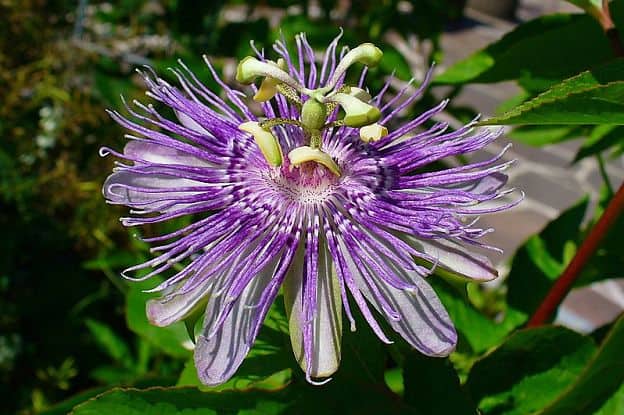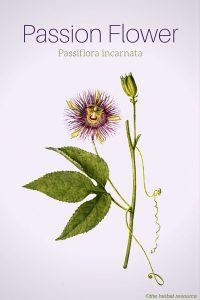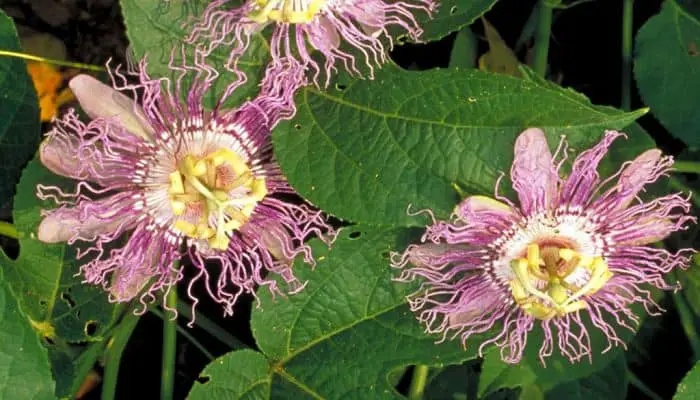Botanical Name: Passiflora incarnata.
Other Common Names: Maypop, passiflora, passionflower.
Habitat: Passion flower is native to North, Central, and South America.
This plant is mostly tropical, but some varieties may grow in colder climates. Passion flower prefers shaded, dry areas, such as those along fences and woods.
It can be cultivated from a cutting or seeds in full sun with good drainage.
Plant Description: The passion flower plant has a long vine which may grow to 9.2 meters in length.
It has alternate, serrate leaves with finely toothed lobes. The white flowers have a purple center.
The mystery of the beautiful blossom developing from an unassuming bud was compared to the Passion of Christ because the plant parts were thought to represent the crucifixion, giving rise to the name passion flower.
This flower blooms from May to July. The fruit of this plant, which is called a granadilla, is a smooth, yellow, ovate berry containing many seeds.
Plant Parts Used: The leaves, stems, and flowers are all used in medicinal uses.

Therapeutic Uses, Benefits and Claims of Passion Flower
Traditionally, passion flower has been used for its sedative effect. Due to this effect it has been used as an herbal sleep aid and is considered a good herb to relieve anxiety.
Historically, it was also used to treat gastrointestinal spasms.
Passion flower has a hypotensive effect (lowers blood pressure) and also relieves tachycardia (fast heart rate.)
The antispasmodic effect makes this herb useful in treating the symptoms of Parkinson’s disease, seizures, and hysteria.
This herb has also been used to treat nerve pain and shingles.
Asthma, especially with a high level of spasmodic activity, responds well to passion flower use.
It can be combined with valerian, hops, and Jamaican dogwood for an effective herbal insomnia treatment.
Passion flower may also have a mild aphrodisiac effect.
Research is being done on the effect of passion flower as a treatment for opiate withdrawal and as an herbal treatment for Parkinson’s disease.
Passion flower has been used to treat some of the symptoms associated with ADHD (ADD).
Dosage and Administration
Passion flower is available as a dry herb, tea, tincture, as extracts or in capsule/tablet form. Four to eight grams of the dried herb can be taken daily in divided doses.
The tincture can be taken in 3-4 doses of 5-10 ml per day.
The capsules usually come in 200-400 mg doses taken two to three times a day.
This herb is often combined with other herbs in formulas designed for specific conditions.
Side Effects and Possible Interactions of Passion Flower
There have been no major side effects noted with passion flower use.
Caution should be taken when first taking this herb while driving or operating machinery.
Use of this herb with prescription sedatives is not advised due to the cumulative effect. This herb may also interact with MAO-inhibitors.
Thordur Sturluson
Latest posts by Thordur Sturluson (see all)
- What is the Difference Between Hemp and Marijuana? - June 3, 2019


Leave a Reply